
Big Data, the Internet of Things (IoT) and Sensors will be the technology trends most impacting mobile workforces over the next 12 months, say mobile technology buyers in the latest research. The independent research, carried out by Opinion Matters and commissioned by Panasonic Toughbook, questioned 250 mobile technology buyers for businesses in the UK.
Buyers highlighted device and data security as the key improvement area in mobile computing devices over the next five years. Alongside the adoption of these future technologies, buyers also predicted the increasing need for rugged devices for their mobile workforces.
And, of course, the ever constant need for ergonomic design and long-term compatibility of peripherals will be required to allow workforces to easily take advantage of these future technologies and for mobile hardware to be adaptable and to provide return on investment.
Technology Trends
When asked to rate the importance of technology trends for use by their mobile workforce, buyers rated Big Data the most important, closely followed by IoT and Sensor technologies, including atmosphere, temperature and biological sensors.
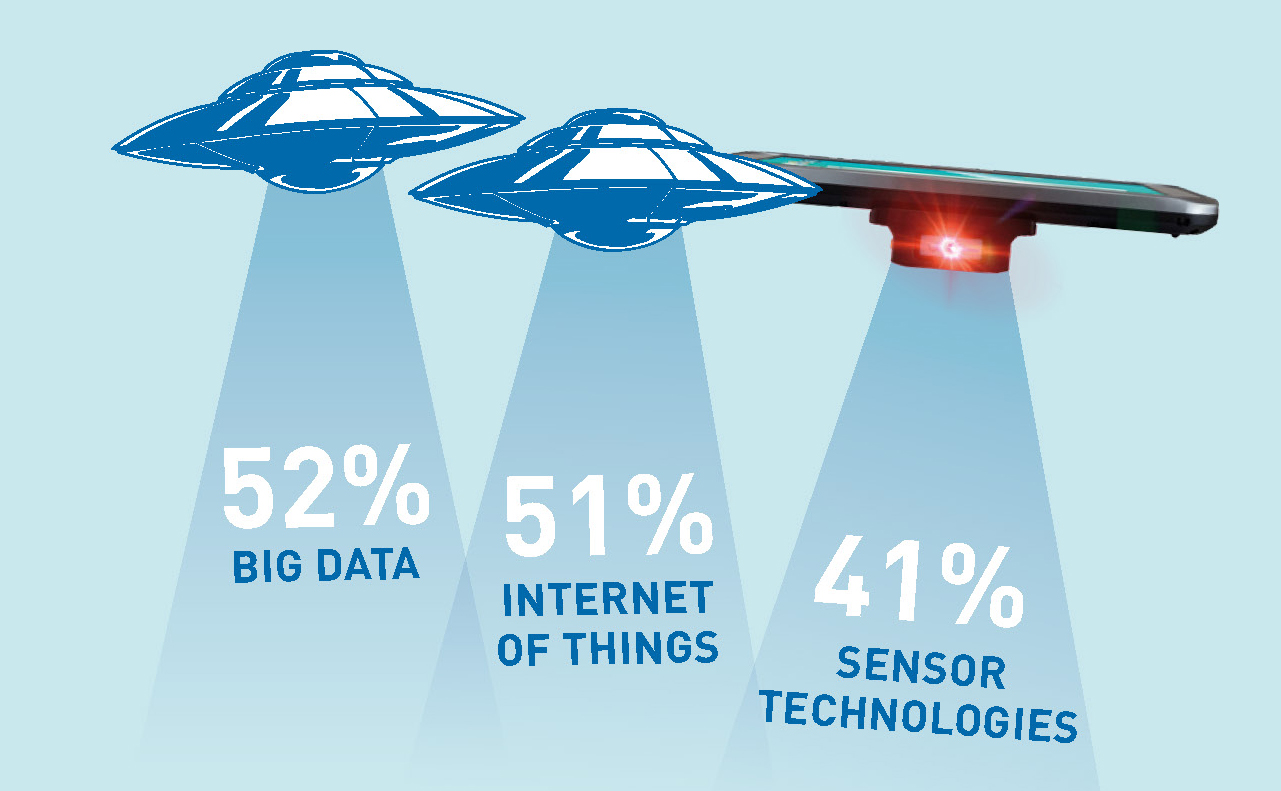
When thinking about the immediate future (i.e. the next 12 months), how would you rate the importance of the following technology trends for your organisation in terms of their use by your mobile workforce?
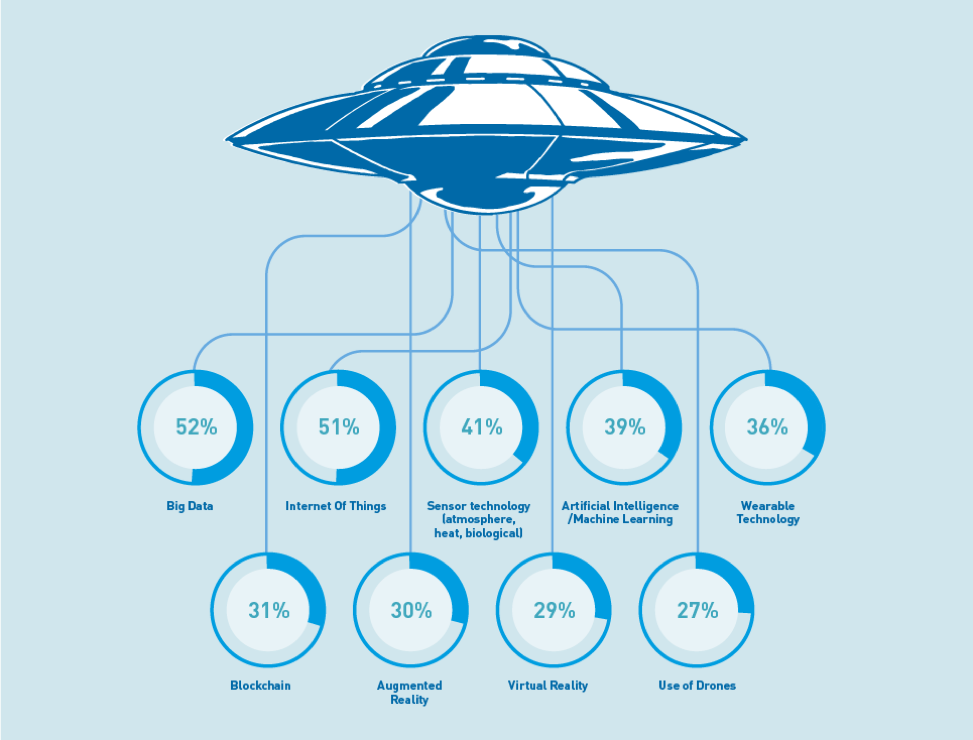

What do you think would be the main reasons for the mobile workforce in your organisation to have this kind of technology in the immediate future (i.e. next 12 months)?
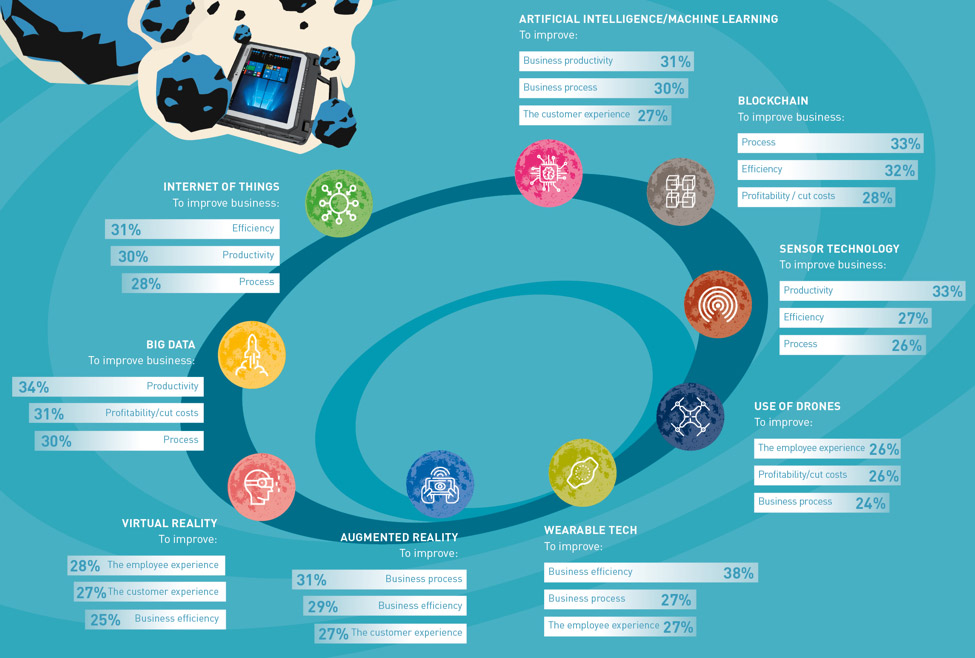
Who Benefits?
Unsurprisingly, the mobile device buyers thought that the IT Department would benefit most within the organisation from every technology trend. However, looking at the second department to benefit most threw up some interesting insights.
Which teams in your organisation do you think will benefit most from the following technology trends over the next 12 months?
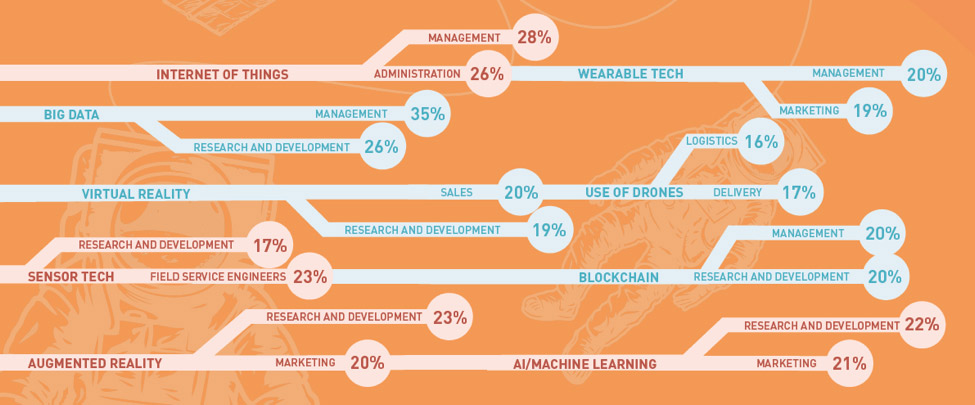
Business Benefits
Looking further into the future, over the next three years, buyers could clearly see the impact on their mobile workforces of Big Data to improve service offerings, improve processes and reduce costs. With IoT, they saw the mobile workforce benefits as improving processes, improving service offering and helping to improve the functionality of mobile devices.
What do you think will be the main impact of each of the following for your mobile workforce in the next 3 years?

Mobile Priorities
Considering how mobile devices will need to change over the next five years to take advantage of these new technologies, buyers prioritised improvements in device and data security, processing power and communications for faster data transfer.
In which of the following areas do you predict your company’s mobile devices will need to change most over the next 5 years to take advantage of technologies such as Internet of Things, Big Data, Virtual Reality, Augmented Reality, Wearable technology, drones and sensors?
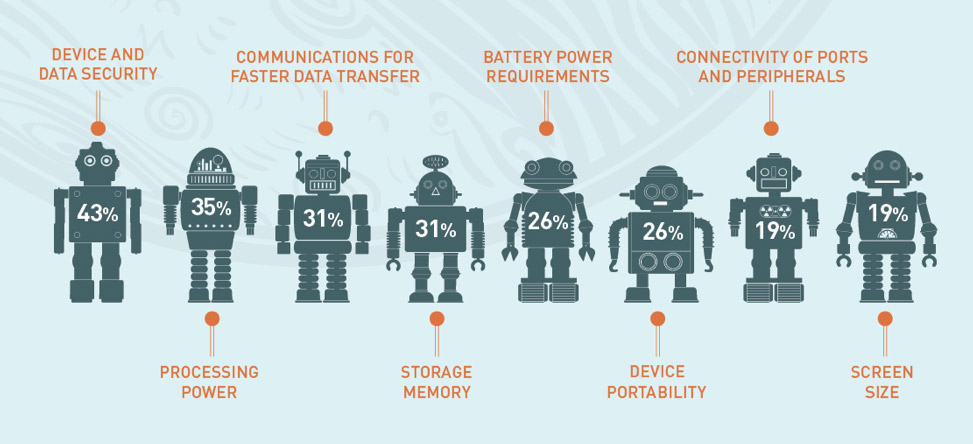

Which type of devices do you see being most suitable for your mobile workforce in the next 5 years?
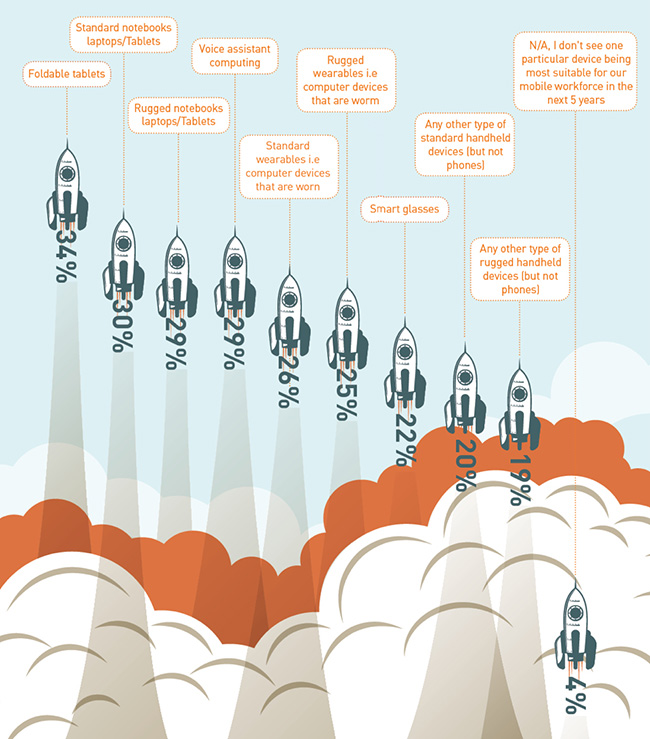
Do you think the mobile workforce in your organisation will move away from using the types of mobile devices it currently uses?
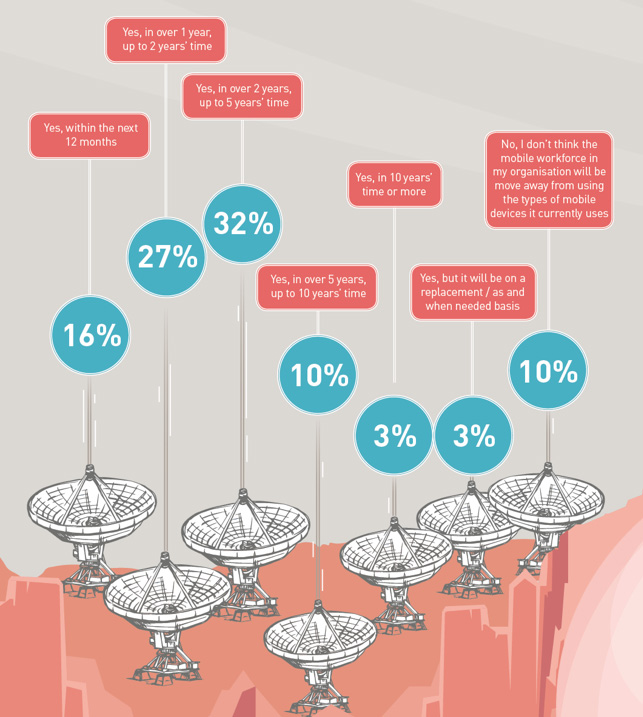
Smart Technologies
The adoption of smart technologies for mobile workforces already looks well underway. Many buyers said that the implementation of smart watches, wrist bands and drone use had already been completed or was imminently planned for mobile workforces.
Do you think the mobile workforce in your organisation will be using any of the following devices in the future?
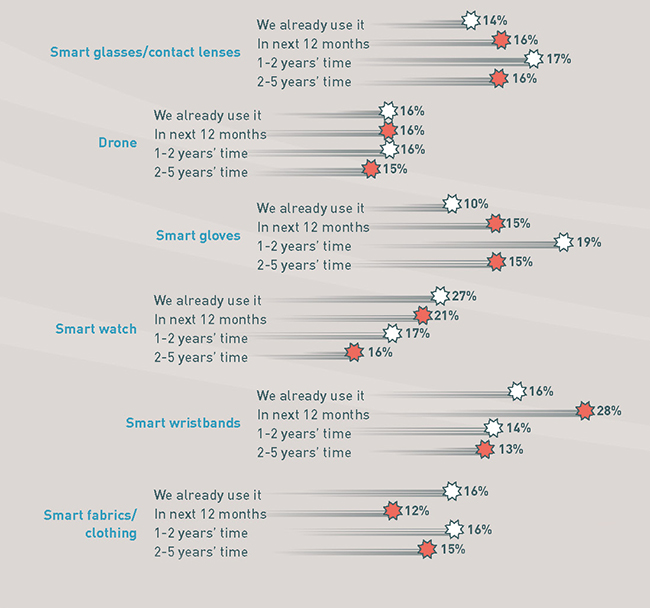
Barriers to Adoption
Cost and reliability were the biggest issues preventing organisations from adopting new technologies faster.
What do you think would be the main thing preventing your organisation from adapting to technologies such as Internet of Things, Big Data, Virtual Reality, Augmented Reality, Wearable technology, Use of drones, Sensor technology?
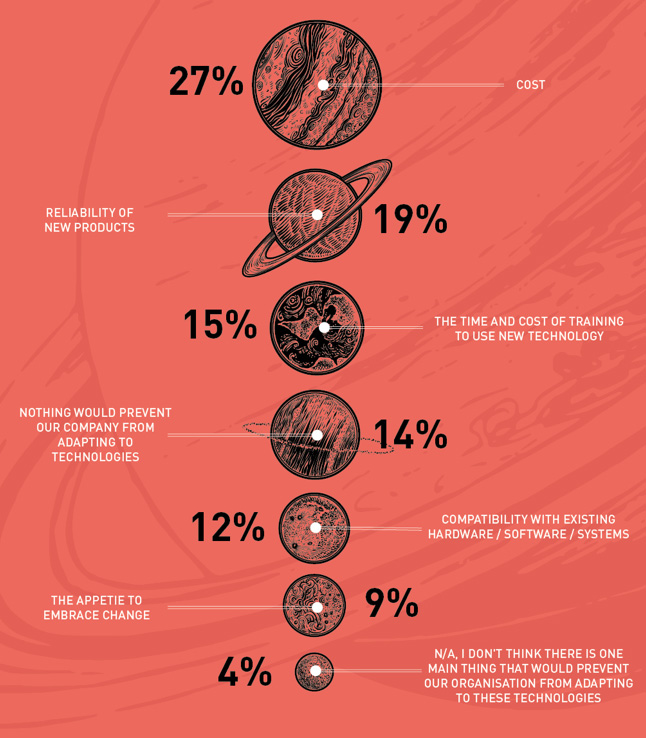
As these technologies are deployed, we move ever closer to the age of Edge Computing, where processing power is required at the edge of the network, much closer to where data is collected. This means the role of the mobile workforce computing device becomes even more critical in the gathering, analysis and communication of data, and the provision of services and in improving productivity.
Panasonic is already focused on evolving its rugged mobile computing notebooks, tablets and handheld devices to allow businesses to benefit from these technological leaps. We have, in some devices, for example, already integrated sensor technology, such as heat sensors, to enable data to be collected from the field and seamlessly transferred into backend systems or the cloud.
Our devices, with their extensive range of ports and sensors, can be used as IoT devices or to connect, monitor and maintain IoT equipment. In the Big Data area, we continuously upgrade the communication and processing capabilities of our rugged mobile devices to ensure they have the capability to meet these needs.
Download Whitepaper (PDF 6.76MB)Contact us
Contact us for more information on Panasonic Business products:.



